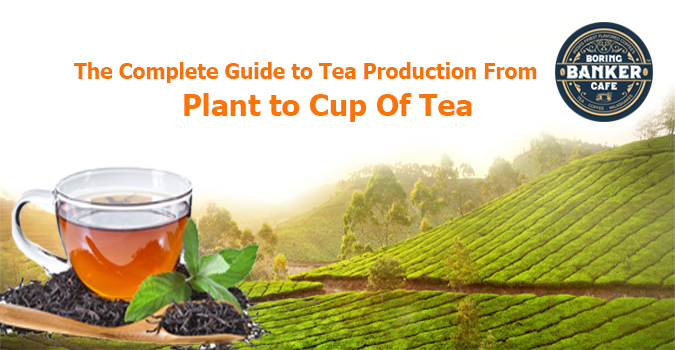
Tea, an immensely popular beverage worldwide, boasts a rich heritage and a multifaceted production process that seamlessly merges tradition and modern techniques. This article delves comprehensively into the fascinating realm of tea production, illuminating every phase with meticulous detail.
Cultivation: Nurturing the Tea Plant
Tea cultivation begins with the Camellia sinensis plant, the common origin of all tea variations. Flourishing in specific climates and altitudes, usually ranging up to 2,000 meters above sea level, tea plants thrive in regions with distinct seasons, moderate rainfall, and fertile soil.
The propagation of tea plants involves either seeds or cuttings. These plants require diligent care, including regular pruning to stimulate fresh growth and plucking of young leaves, known as flushes. China, India, Sri Lanka, Japan, and Kenya stand as prominent tea-producing regions, each contributing unique flavors and qualities to the global tea market.
Harvesting: The Craft of Leaf Selection
The timing of harvest significantly influences the ultimate flavor and aroma of the tea. “Two leaves and a bud,” the most tender leaves, are harvested during specific seasons depending on the desired type of tea. Three primary tea leaf categories include:
White Tea: Crafted from young leaves and buds, minimally processed to retain delicate flavors.
Green Tea: Leaves undergo quick heating to prevent oxidation, preserving their vibrant green hue and fresh taste.
Black Tea: Full oxidation of leaves results in a robust flavor and dark appearance.
Processing: Sculpting Distinctive Characteristics
Tea processing entails a meticulously orchestrated series of steps, unique to each tea type. These stages encompass withering, rolling, oxidation, and drying.
Withering: Freshly plucked leaves are spread out to reduce moisture content, rendering them supple and easier to handle.
Rolling: Leaves are gently rolled, breaking down cellular structures and initiating oxidation. This can be executed manually or using advanced machinery.
Oxidation: For black tea, leaves are spread out to interact with oxygen, which deepens their color and infuses distinct flavors. Conversely, green tea is promptly heated to halt oxidation.
Drying: The final step involves drying leaves, arresting oxidation, and minimizing moisture. This preserves the intricate flavors and aromas developed during processing.
Packaging and Distribution: Safeguarding Freshness
Post-processing, teas are meticulously packaged to maintain peak quality and freshness. Effective packaging safeguards against moisture, light, and air exposure, all of which can compromise flavor over time. Different packaging forms, including tea bags, loose leaves, or compressed cakes, cater to varying preferences and markets.
A well-established distribution network ensures teas traverse the globe, reaching consumers far and wide. Tea auctions and direct agreements between producers and buyers play an integral role in the tea trade, effectively connecting tea estates with international markets.
Brewing: Culmination of the Artistry
The tea journey culminates in the hands of consumers as they prepare their brew. Brewing intricacies like water temperature, steeping duration, and tea-to-water ratio wield significant influence over flavor and aroma. Whether your penchant leans towards delicate white tea, refreshing green tea, or hearty black tea, adept brewing unlocks the full spectrum of tea’s potential.
Boring Banker Cafe: Elevating the Tea Experience
In the world of tea, innovation meets excellence at Boring Banker Cafe, a rapidly growing coffee franchise company. Renowned for its exceptional coffee and tea products, including their fitter coffee, Boring Banker Cafe has captivated discerning palates. This cafe franchise has extended its expertise to crafting premium teas, delighting tea lovers and customers with its exquisite range of offerings.
Conclusion
Tea production masterfully weaves together science, tradition, and artistic finesse. From nurturing tea plants to meticulous processing and packaging, every step contributes to the extensive array of flavors and aromas cherished by tea aficionados worldwide. Whether savored as a solitary respite or shared among friends, tea stands as a timeless global tradition that bridges cultures, continents, and centuries. With every sip of your preferred tea, reflect upon the intricate voyage that elevates a simple leaf to a splendid cup, or explore the innovative offerings of establishments like Boring Banker Cafe for an elevated tea experience.